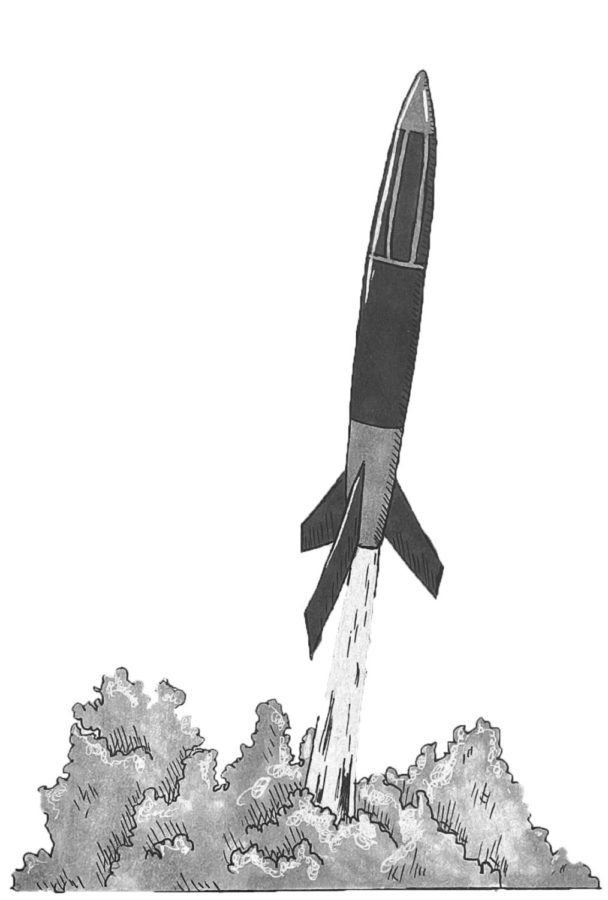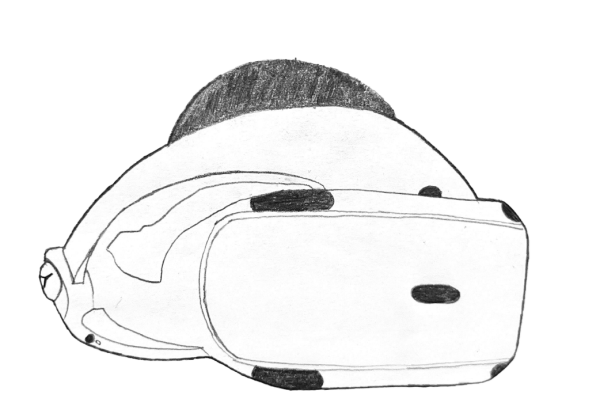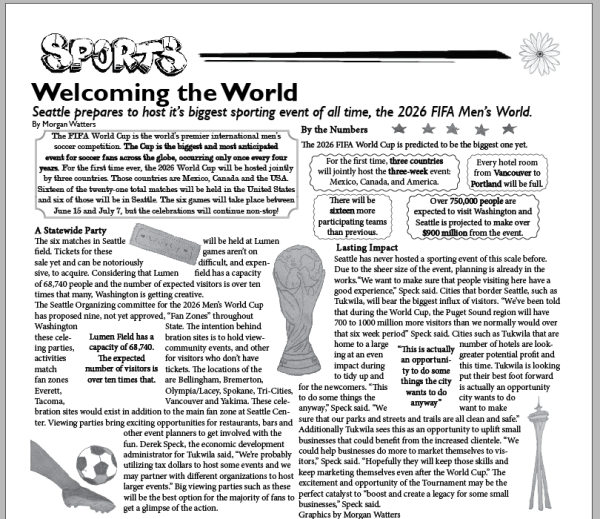Space Oddity
Inside Garfield’s Rocket Club.
Rocketry is a relatively new club at Garfield, but it has already sparked interest in the community. Not only is it an opportunity to build and launch rockets–obviously tasks that are enticing enough–but the club also gets the unique opportunity to go deeper into the physics and design of rockets. As described by Jovie Webbeking, the president and co-founder of Rocket club, Rocket Club “[learns] the physics behind building model rockets, then [they] build and launch them.”
The club works on a yearly cycle, with the endpoint being the club’s participation in a national competition called the American Rocketry Challenge. The goal is simple: to work as a team to design and build a rocket that is structurally sound, and powerful enough to out-launch those of the other competitors. But beyond this there are guidelines set for the competition as well as a required video and presentation made to reflect on the building process.
Last year when the GHS Rocket Club competed, the competition required their rocket to reach 800 feet in 40-43 seconds while carrying two raw eggs. This year, the goal is to build and launch a rocket with two body tube diameters reaching 835 feet within 41-44 seconds, again carrying two raw eggs which remain intact throughout the launch.
The club competes against other schools, as well as chapters associated with outside organizations. Ingraham High School also has a Rocket Club which Garfield competes against, as well as multiple schools in Bellevue.
Each participating team is required to include a certified member of the National Association of Rocketry as a mentor for the competition and building process. Aside from this the teams are completely individual, so immense leadership and organization are crucial to staying on top of tasks and meeting the end-of-year goal.
The year-long process begins with planning, then moves to testing and execution later in the year. By late fall new members are familiar with the basics of model rocketry, and the club splits into groups with specific tasks including design, research, and purchasing of parts. Currently, the club is working on building model rocket kits which they hope to launch next month. They are also beginning to craft the rocket design they will use, which they do in a simulation called Open Rocket. After launching, they will begin to buy individual rocket parts. Another necessary task is finding sponsors so the club members don’t have to personally fund the project. The rocket motors the club used last year cost $25 and could only be used for one launch, which introduces difficulty in financing a large number of test launches.
By the winter, the design is finalized and the building process begins. Once the rocket is built, analysis and tests are conducted in order to finetune the design and fix any minor flaws that are present. In March and April, launching continues and the club begins to prepare for other elements of the competition. The submissions are due in April, and the finals of the competition occur in May.
The main challenges the club faces are timeline planning, collecting of funds, and meeting times. The latter is particularly difficult because of how much time the club needs to complete all the tasks they need to do over the course of the year, all of which can’t be done during normal weekly meetings.
Rocket Club meets on Tuesdays in room 234. To join, “there is no previous experience needed, no physics or math experience needed, and it’s just a place to have a really fun time,” Webbeking said.







